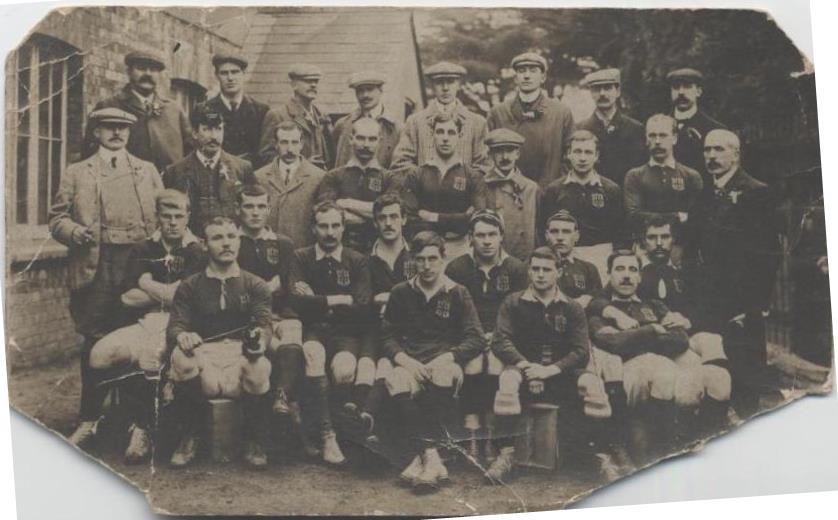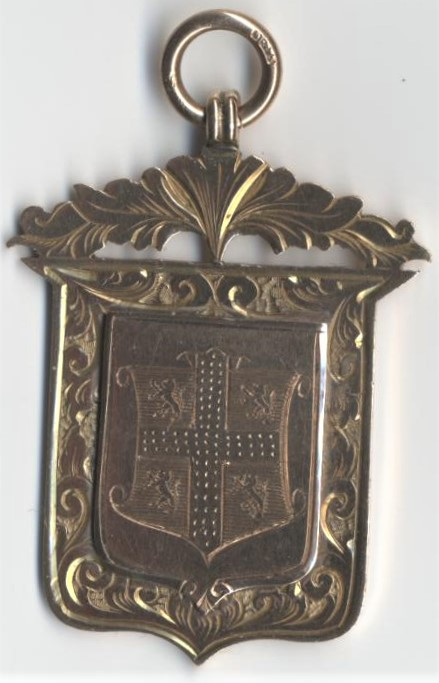
16 December 2024

The annual County Championship was one of English rugby union's leading competitions from the 1890s through to the professional era in 1995. It provided a vital stepping stone for emerging players from leading rugby clubs and outstanding performances for their counties often propelled them on to international recognition.
Yorkshire was the dominant county until the schism of 1895 over broken-time payments which led to the formation of the Northern Union and the game of rugby league. By the turn of the century, different counties had risen to the fore but, despite the ravages that rugby league inflicted on clubs in the north of England, the county of Durham remained a source of clubs and exceptionally talented players who were at the forefront of English rugby up to the outbreak of the 1st World War.

Durham v Cornwall, 27/03/1909, Hartlepool
For ten consecutive years from 1900, Durham showed astonishing consistency and they appeared in twelve County Championship Finals overall, including a replay between 1900 and 1914. Their opponents were varied and included Gloucestershire in 1902 and Kent, Middlesex and Cornwall twice each. Their greatest opposition came from Devon who contested five finals including the famous replay at Exeter in 1907 which was a scoreless draw and led to the Championship being shared for the first time in its history.
This remarkable run began at the County Ground, Exeter in April 1900. Despite conceding an early try to Devon, the Durham side captained by Walter Taylor from the Tudhoe club assumed control and led 8-3 at half-time. A chargedown try from their future England forward and Durham City stalwart George Summerscales early in the second half was sufficient to ensure a first championship victory by 11 points to 3. A year later their opponents in the Final were again Devon and for this match Durham had home advantage at the Victoria Ground in West Hartlepool with six local players in their side. It was a chastening experience despite the presence of four English internationals in the Durham backline. Left wing Walter Taylor was still the captain, but his side was comprehensively outplayed in the first half and conceded four tries overall in a 14-3 defeat.
In their third consecutive Final in April 1902, the Durham side travelled to Kingsholm to face the might of Gloucestershire, convincing victors over Devon earlier in the competition. The Durham captain was the centre three-quarter Jack 'Long John' Taylor. Capped eight times for England and a try-scorer in the recent Calcutta Cup triumph in Edinburgh, he was supported by his international half back colleague Bernard Oughtred from Hartlepool Rovers. Taylor's outstanding performance included a goal from a mark and the conversion of Joicey's decisive second-half try which saw Durham through by 9-3 to their second championship.
A year later Durham with seven internationals in their ranks hosted Kent at West Hartlepool. Accompanied by the Sunderland international duo of the opportunist wing Edgar Elliot and centre Norman Cox in the three-quarters, a drop goal from their captain 'Long John' Taylor narrowly saw them home by four points to three to gain their third championship victory.
Durham travelled to the Rectory Field at Blackheath in April 1904 under Edgar Elliot's captaincy for a repeat of the previous year's final. Despite fielding four internationals, they faced a strong Kent side with seven current internationals and five players who would play test rugby for England and the British Isles. It was a close match and Durham led 6-0 in the second half before two Kent tries, including one from star Welsh winger Teddy Morgan, saw them wrest the title from Durham's grasp by eight points to six.

Durham County Team, 1905
For the sixth consecutive year, Durham were in the final at West Hartlepool in April 1905. Their opponents were Middlesex making their first appearance in the Final since 1898 when they were convincingly beaten by Northumberland. 'Long John' Taylor was back as captain and he and George Summerscales were each appearing in their fifth final. Middlesex were captained by the England forward Charles 'Curly' Hammond and had the newly capped Adrian Stoop as one of their half backs. Once again Durham showed themselves masters of tight encounters winning 9-8 on a very muddy pitch which offered few opportunities for handling.
A year later, their old foes Devon faced them at Exeter in the final for the third time. This proved no contest as the Durham side lost centre Charles Adamson from Durham City, a four-test British Lion in Australia in 1899, who was seriously injured early in the first half. The Devon pack with five internationals turned the screw and led 16-0 before a late try by the Hartlepool Rovers forward Francis Boylen, a future England international, made the score a more respectable 16-3.
In the 1907 championship it was impossible to separate the two great rivals. In the first encounter at West Hartlepool, a try for Devon scored by England's Sydney Start in the seventy eighth minute levelled the score at 3-3 but Devon forward Bulkeley missed the conversion that would have won the match. The replay at Exeter a week later was an intense affair and neither side could breach the other's defences. The teams dined together after the match and decided that there should be no further match, thereby ensuring the first of only two ties in the history of the County Championship.
In the 1908 and 1909 championships, Durham met the emerging might of Cornwall. Their visit to the Recreation Ground, Redruth under the captaincy of Adamson in April 1908 augured well as they had an experienced pack with four England internationals and Cornwall were playing their first Final. It was not to be Durham's day. Future England three-quarters Bert Solomon and Barrie Bennetts were in superb form and Cornwall outscored Durham by five tries to nil in a comprehensive 17-3 victory.
Summerscales made his eighth and final appearance in this Final. A year later 'Long John' Taylor returned as captain in his ninth final on home territory at Friarage Field, West Hartlepool in March 1909. Despite playing away Cornwall were the favourites but, after a scoreless first half, the Durham threequarters expertly marshalled by their captain pulled through with tries from Fred Chapman and Harry Coverdale to win 12-0 and secure their sixth championship.

County Championship Medal, 1909
It was the end of a great run. There was to be just one more appearance in a pre-war Final at Welford Road, Leicester in March 1914 against the Midland Counties. Captained by their England winger Fred Chapman alongside his fellow international AJ 'Jimmy' Dingle, Durham were outplayed by a strong midlands combination with ten players from Leicester. The score was 5-5 at half-time but their opponents scored four tries without reply in the second half to win 22-5. Durham would have to wait until 1989 before winning their next County Championship.
Sources:
About the Author - A professional musician and arts administrator, Richard Steele has had a life-long love of sport. He has been on the committee of the World Rugby Museum at Twickenham since 2005.
Visit our website, book your visit and follow us on Facebook, Twitter and Instagram.